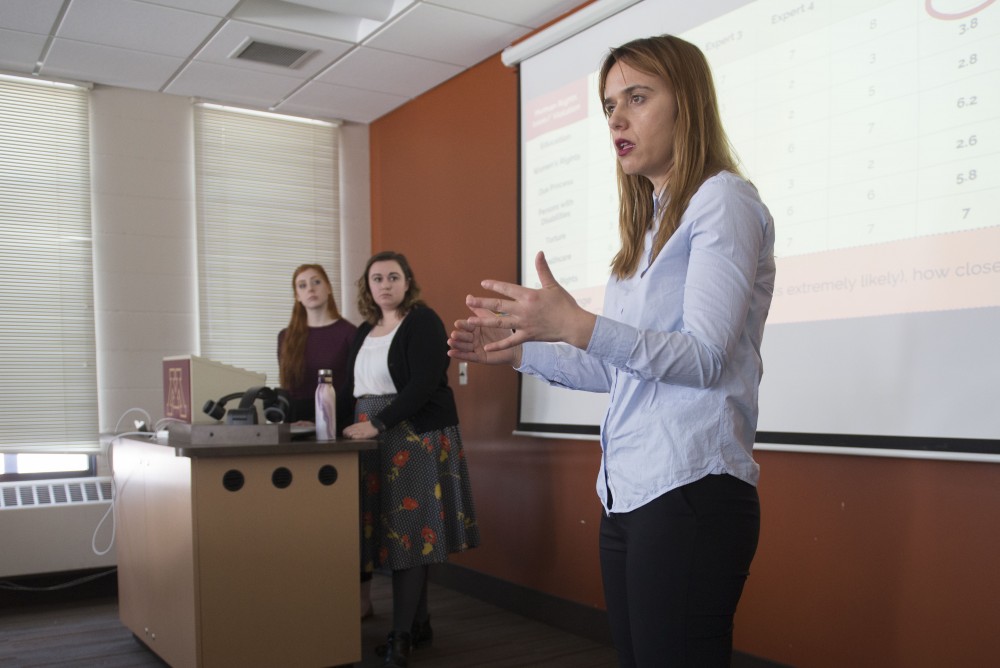University of Minnesota professional students created a new method for prioritizing efforts on addressing violations to human rights that will be sent to the United Nations for potential adoption and use.
Master’s students in the Humphrey School of Public Affairs created the Minnesota Method for Human Rights Change, a tool that can be used by human rights advisers to decide what rights to focus on changing first. The students officially presented the method last week and were in the process of finalizing their report to the U.N.
It will take some time to experiment and tweak the method, said Todd Howland, a representative from the Office of the High Commissioner for Human Rights at the U.N. He estimated it will be at least two years before it officially becomes a U.N. approved method.
It is a much-needed tool they’ve never had before, Howland said.
“Right now there is no method,” he said. “There’s a lot of human rights advisers that do something kind of similar, but there is no formal method, so this provides a formal method.”
Howland led the students in response to a need expressed by U.N. human rights advisers in a survey to identify needs and best practices. The two-part method was developed to be used by human rights advisers, who are deployed by the OHCHR to work on human rights in specific countries. The advisers would use the Minnesota Method to decide what human rights issues should be addressed.
When there are multiple human rights violations in a country at the same time, it can be difficult to establish a strategy to tackle things.
“You can’t do everything, because if you try to do everything, you end up getting nothing done,” Howland said. “You need to prioritize, but you need to do it in a way that doesn’t undermine your credibility.”
Credibility can be compromised if advisers and the U.N. are not addressing human rights violations that are important to the country they are stationed in, Howland said. For example, they may be working on issues that are easier to change, but the country doesn’t see as important, he added.
“You need to have a mix between what might be low-hanging fruit and what you need to deal with, otherwise you have no credibility,” Howland said. “The method allows you to actually factor in those considerations before you decide on what you want to focus on.”
The method consists of two parts. The first phase encompasses a literature review, where preliminary research is completed to help inform the human rights advisers. The second phase involves gathering local experts, who would use assessments to help U.N. advisers decide what human rights to address.
The method’s involvement of local experts and stakeholders gives human rights advisers a clearer perspective as to what the most pressing problems are. The method would also help advisers explain and defend why they chose to work on one human rights issue over another.
“Phase two of the Minnesota Method will help advisers better understand where positive movement for human rights change already exists and who is involved, how to better identify barriers to change, how to set goals to affect change, and how to select tactics to achieve those goals,” said Shelby Ankrom, a student on the project.
The advisers would choose one to three rights to work on after the series of assessments.
“Human rights change is a very complex and difficult process to facilitate. It takes years and many moving parts the seekers of change must contend with,” said Gonxhe Kandri, another student on the project. “The Minnesota Method offers strategic pathways to facilitate human rights change.”
Beyond the U.N., Kandri can see other real-world applications for the Minnesota Method.
“It is a practical method that can be used by human rights activists and educators,” Kandri said.








